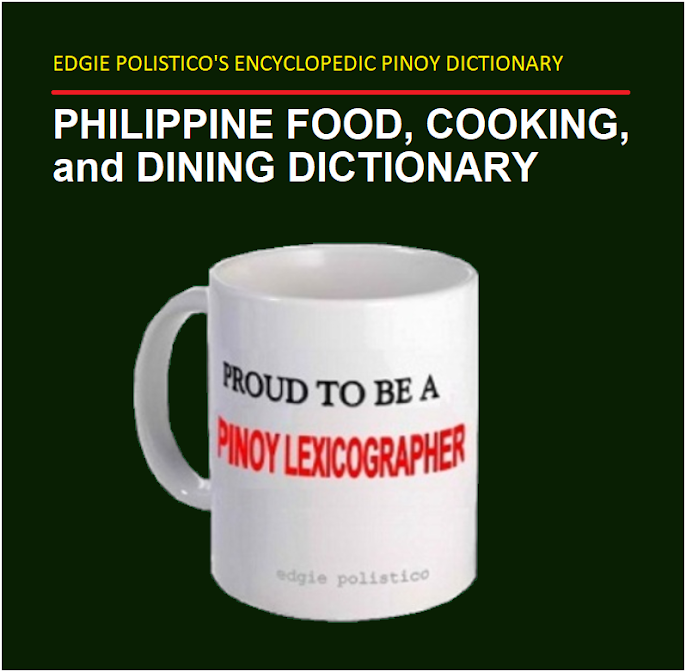.JPG) |
Boneless dried dilis sold at the roadside stalls in Brgy. Damortis, Sto. Tomas, Pangasinan.
boneless dilis – /bon-les di-lis/ Tagalog dried fish) [n.] deboned anchovies.
The dilis (anchovies) are decapitated, butterflied, and deboned of their backbone, then soaked in a brine solution, drained, and sundried to become dried boneless dilis.
Best cooked by pan frying briefly on medium heat until the fish turns lightly brown and crisp. Often eaten with a dip of spiced vinegar on the side and lots of steaming freshly cooked rice and a cup of coffee.
The dilis (anchovies) to be deboned and dried must be freshly caught. Otherwise, when dilis is no longer fresh, it would not be of good quality as it would likely be itchy when eaten and emits a foul odor.
It must be noted that Filipinos are fond of calling deboned fish or meat as boneless. It is actually a misnomer to call this fish "boneless" because the fish here actually has bones and what they did to make it boneless was that they deboned it like what they did to this dilis (anchovy) here.
Thus, it should aptly be called deboned dried dilis instead of boneless dried dilis. But "boneless" already got its new meaning and usage and has deeply rooted already in the Pinoy community. Boneless already became part of Philippine English to exactly mean "deboned" and we got stuck with it. Those who got confused, please bear with us. This is our language and we are equally entitled to it.
Boneless dried dilis sold at the roadside stalls in Brgy. Damortis, Sto. Tomas, Pangasinan.
All photos by Edgie Polistico are copyrighted. ALL RIGHTS RESERVED.
If you liked this post, share it.
Let us know your opinion on the subject. Feel free to comment in the comment section, below. It is important for us to know what you think.
Tell us what other topics you would like us to write, share, and discuss.
For more about Filipino food, see this Philippine Food, Cooking, and Dining Dictionary. It is OPEN and FREE.
Continue to follow my blogs. You can also follow and learn more by joining us in our Facebook group. Have more bits and pieces about our kind of food, ingredients, and ways of cooking, dining, and knowing food culture across the 7,641 islands of the Philippines.
Encouragement and enthusiasm are not enough. I also need moral support, prayers, and anything else that can uplift my spirit and keep my good reasons. Keep them coming. All I know is that I am happy with what I am sharing and giving away. If you are pleased and happy with what I am doing, just smile and please share the happiness. Keep sharing and include to share the PHILIPPINE FOOD ILLUSTRATED. I feel energized when my blog becomes one of the reasons why you are happy and smiling.
Edgie Polistico
.JPG)





